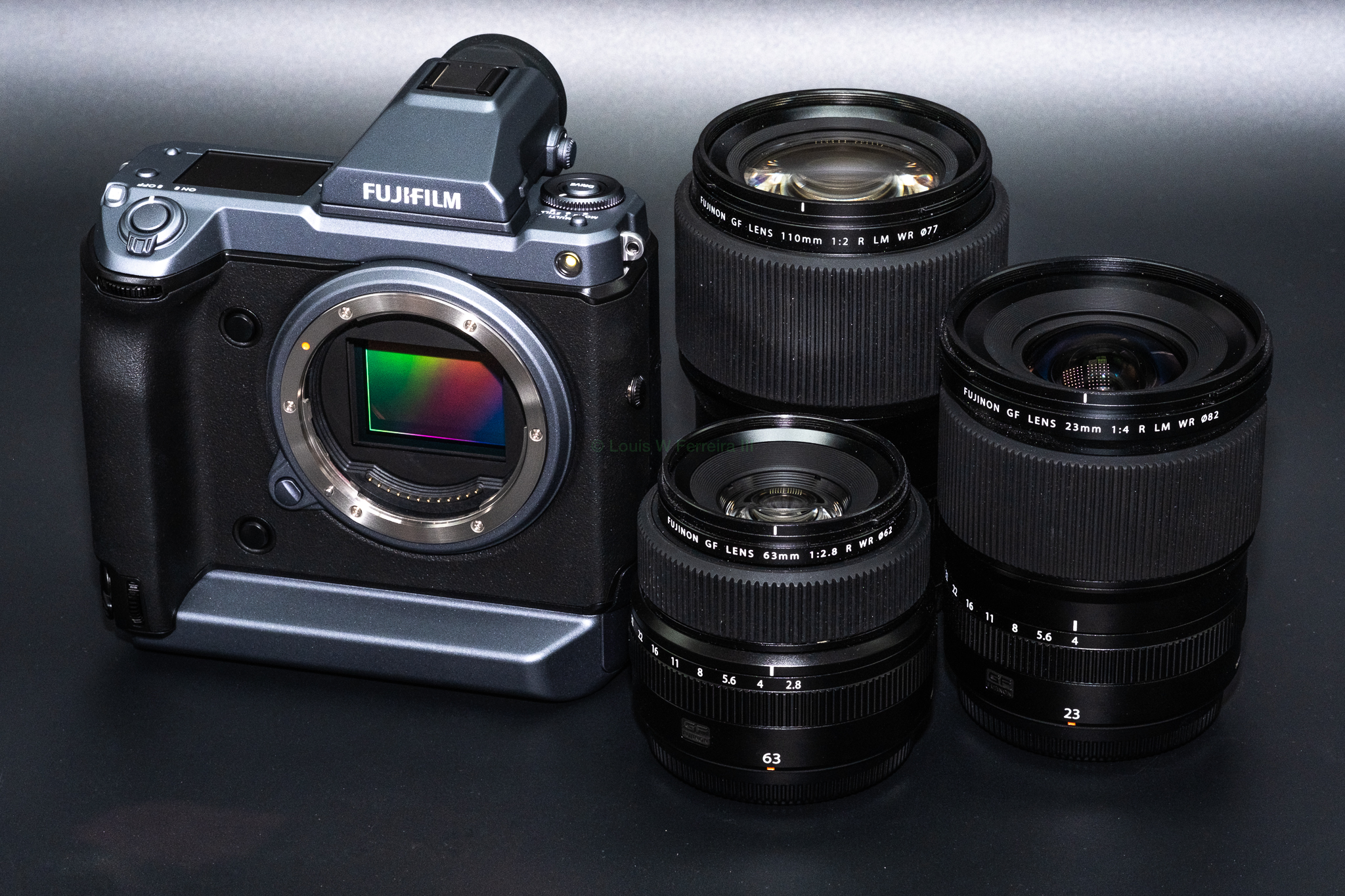
There aren’t many sites that do in-depth technical testing you can trust, which is why I have been looking forward to Jim Kasson’s excellent analysis of the Fujifilm GFX100. Now that he received a camera his testing will pick up some and he has already found some artifacts in his testing. I recently experienced them myself with a night shoot where I pushed the images too much, but I have come across this kind of issue very rarely.
The Last Word – GFX 100 EDR
16 bit precision afford slightly more DR at low ISOs. Probably not too significant, but it might be useful. 16 bit precision causes the electronic shutter to scan more slowly, though.
The Last Word – GFX 100 read noise spectral analysis
GFX 100 has a {Green, Blue] [Red, Green] (aka GBRG), Bayer color filter array (CFA) pattern, not the usual [Red, Green] [Green, Blue] (aka (RGGB) one that I had assumed.
The red plane shows the unmistakable effects of digital lowpass filtering. It is probably the plane with the PDAF pixels. Since those pixels don’t contribute to the image, they missing information must be filled in by interpolation from the active pixels, which provides a mild cut in the high spatial frequency response.
There are small periodic spikes in the green planes. They don’t amount to much here, but at higher ISOs they get worse. Periodic effects like this tend to be more objectionable than purely random noise.
The Last Word – GFX 100 EDR vs ISO
There may be some subtle improvements from using 16-bit precision, and I’ll be testing for that, but it looks like the read noise is high enough to adequately dither the analog to digital converter even at 14 bits.
The Last Word – Fuji GFX 100 EDR vs shutter speed
There is very little change until the exposures get to be a second or two long, and after that you lose about 0.2 stops of EDR for every doubling of the shutter speed.
The Last Word – Fuji GFX 100 photon transfer curves
I’m seeing none of those, so it looks like the read noise of the camera is enough to dither the analog to digital converter properly, and switching to 16-bit precision will probably provide no benefit. I’ll be checking that visually later on.
The Last Word – Fuji GFX 100 light-field pattern noise
There is a horizontal-direction spike at 1/3 the sampling frequency, or every 6 pixels in the mosaiced raw file. That spike indicated vertically-oriented artifacts. There are vertical-direction spikes at a bit under 1/2 fs, 1/3 fs, a bit under 1/4 fs, and 1/9 fs. The last one indicates a horizontally-oriented artifact ever 18 rows in the mosaiced raw file.
The Last Word – Fuji GFX 100 dark-field pattern noise
There is quite a bit of periodic noise in the blue channel, even though the light-field image of that channel was pretty clean.
The red and second green channel are free of periodic artifacts.
As with the previous post, further testing will need to be done to determine the significance of these anomalies on real-world photography, but it’s clear that the bright and dark portions of the image are affected differently.
Follow Fujiaddict on Facebook, Twitter, Instagram, and YouTube
Fujifilm GFX News, Rumors, and Collaboration
Fujifilm GFX Owners Group
Fujifilm GFX Page
